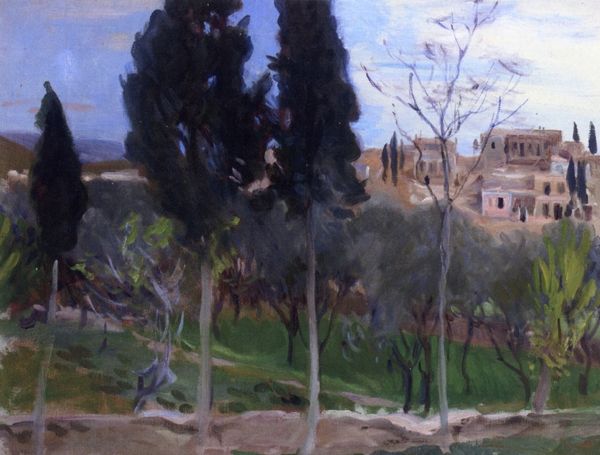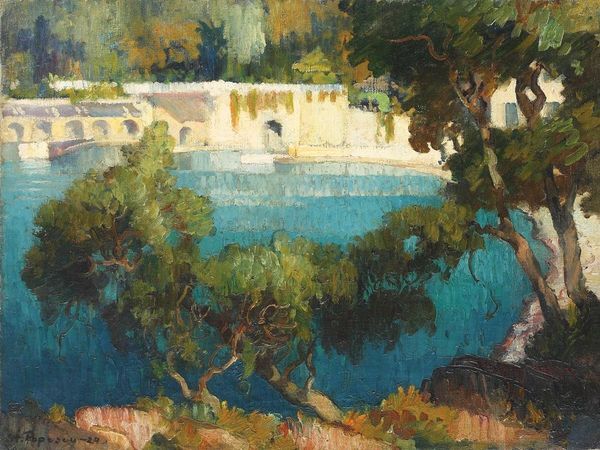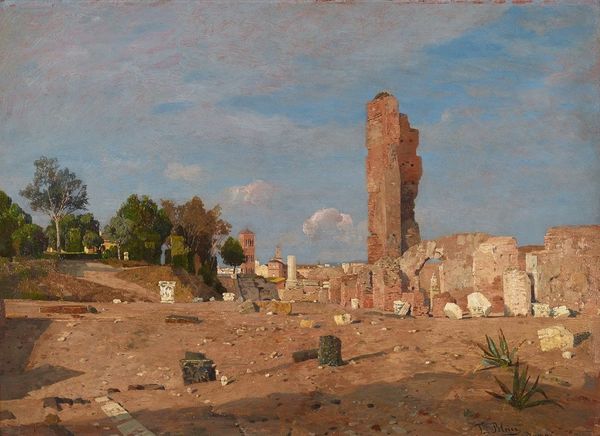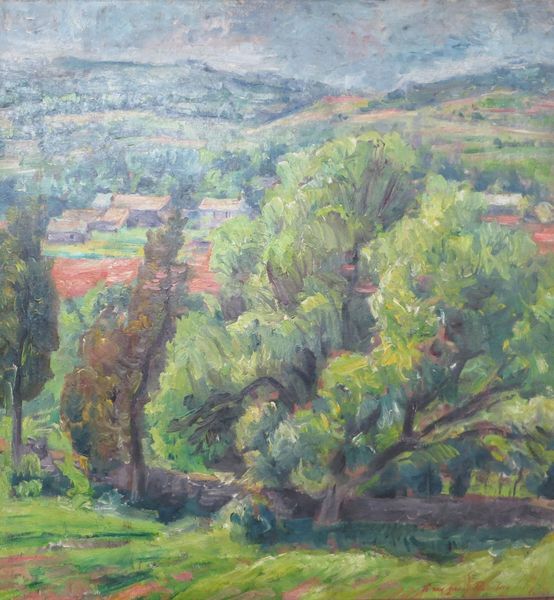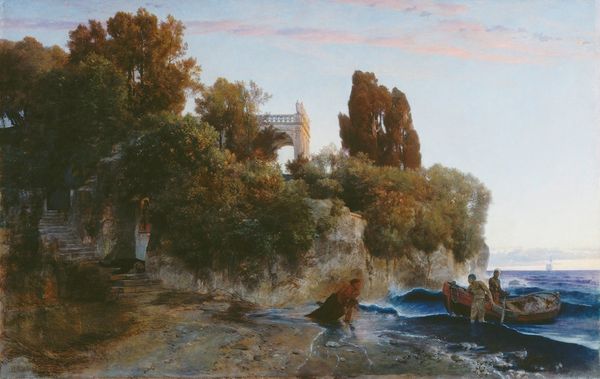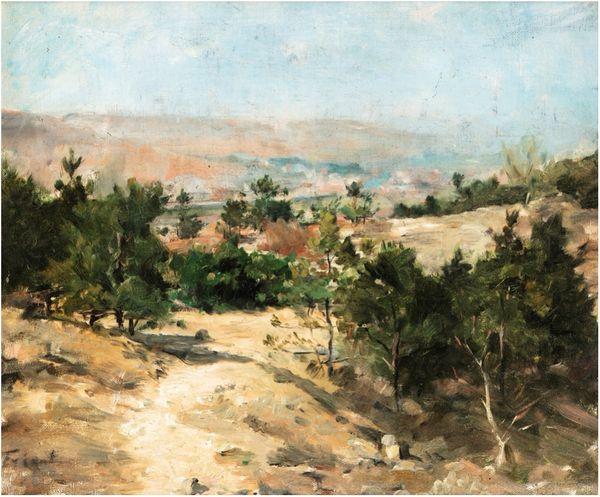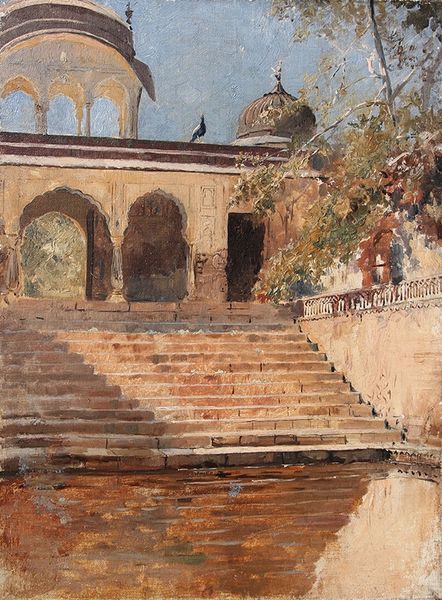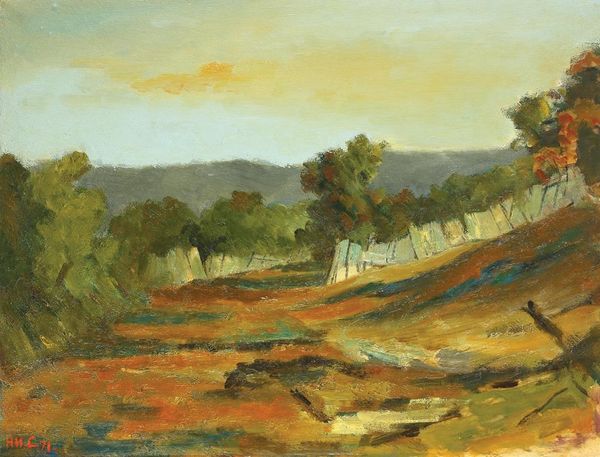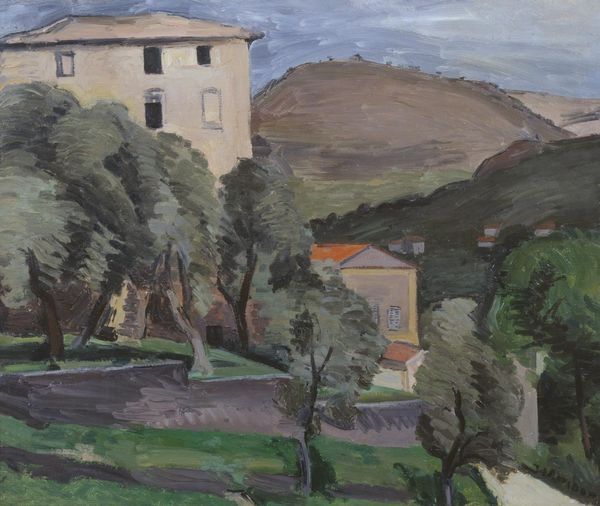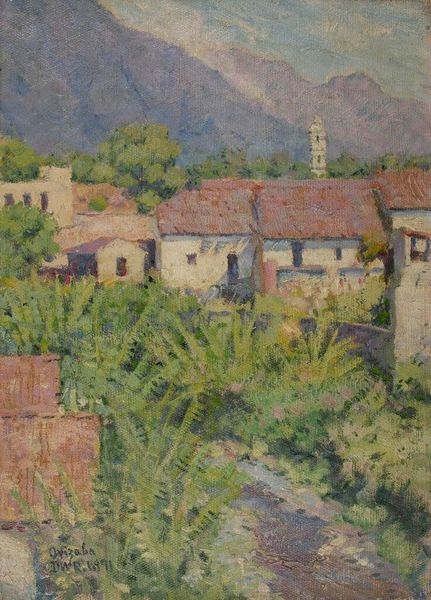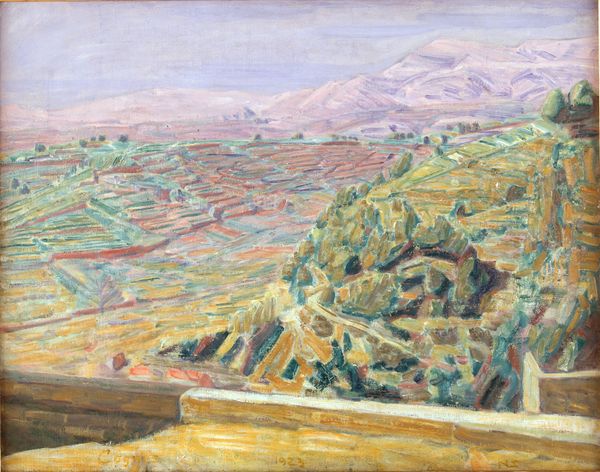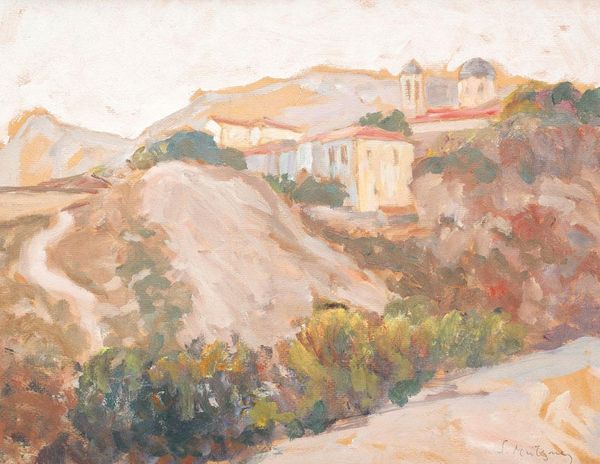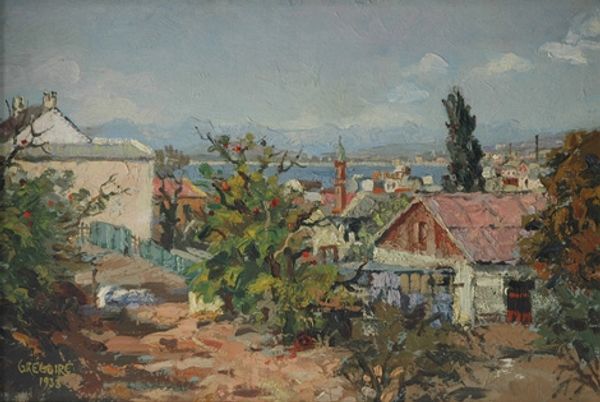
oil-paint
#
oil-paint
#
landscape
#
impressionist landscape
#
possibly oil pastel
#
oil painting
#
cityscape
#
italian-renaissance
#
realism
Copyright: Public Domain: Artvee
Curator: Edward Theodore Compton, known for his landscapes, captures a view of the Palatine Hill in Rome in this oil painting. I’m struck by how the ancient ruins command so much of the visual space, with just a sliver of sky visible. Editor: It's quite imposing, isn’t it? There's a profound sense of depth created by the shadowed foreground, almost a plunge into the earth itself, framing those iconic ruins. There’s a strong melancholic mood, perhaps linked to the fall of civilizations and the slow, inexorable passing of time. Curator: The layers of history certainly feel palpable. What does this specific location represent? Who gets to build on history? The remnants of one era literally support structures of a new one. It highlights the layered experience of existing in the city. How access to the city's resources is differentiated according to ethnicity, economic power and even religion. Editor: Absolutely. Palatine Hill itself is steeped in myth; it's considered the birthplace of Rome. Visually, Compton guides us using color and light, emphasizing the ochre tones and the strong shadows that give texture to the stones. But this isn't just topography. Those crumbling brick forms have an almost totemic presence – remnants of rituals and power, resonating with meaning even now. Think of the figures that walked that landscape – emperors, senators, and everyday citizens of Rome – and how their narratives converge here. Curator: It's powerful to think of the Palatine as a canvas for power and how different groups across centuries have projected themselves onto it. How would this place be experienced if the artist or audience where of a lower social status or non-European ethnicity, or different religious affiliation, during the rise of the European Empires. Editor: That's the evocative pull, isn’t it? While Compton paints with an objective eye, his rendering of ruins reminds us of the inevitable fate of human empires and accomplishments, while leaving space for speculation about what those human endeavours stand for now. It is the psychological weight carried through symbolic structures and motifs. Curator: Thank you. It’s vital to keep engaging with historical landscapes and constantly consider who the beneficiaries are and who may have been harmed by such monuments of human history. Editor: Thank you. It gives a palpable presence of place to memory.
Comments
No comments
Be the first to comment and join the conversation on the ultimate creative platform.
